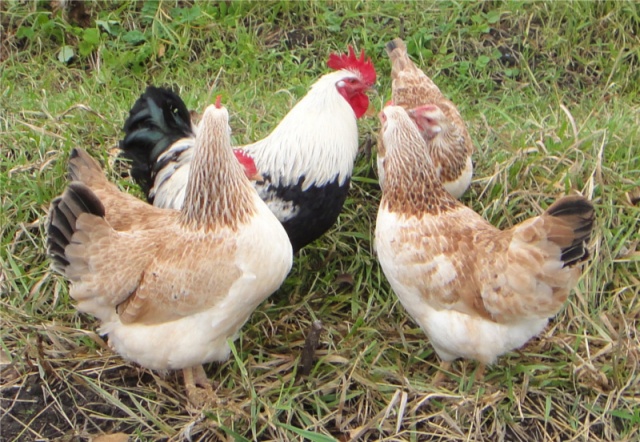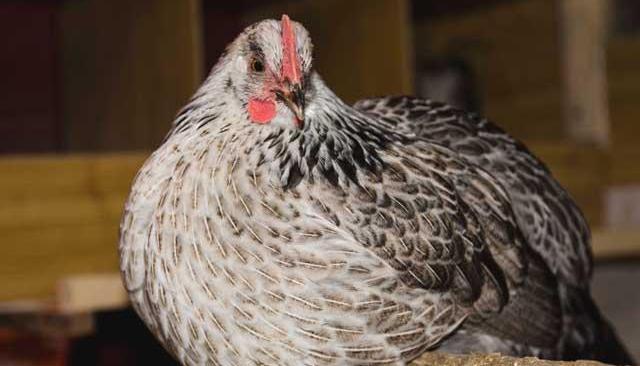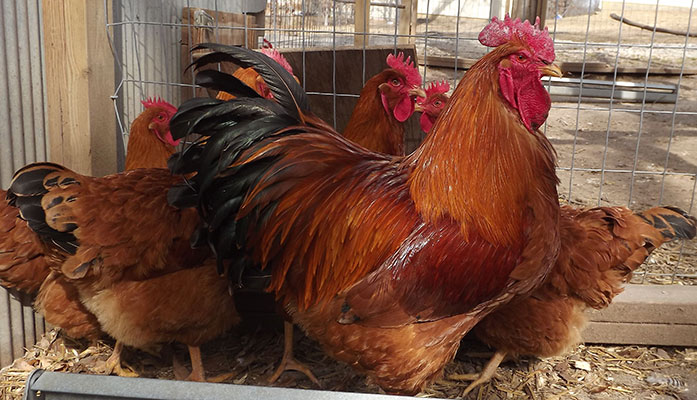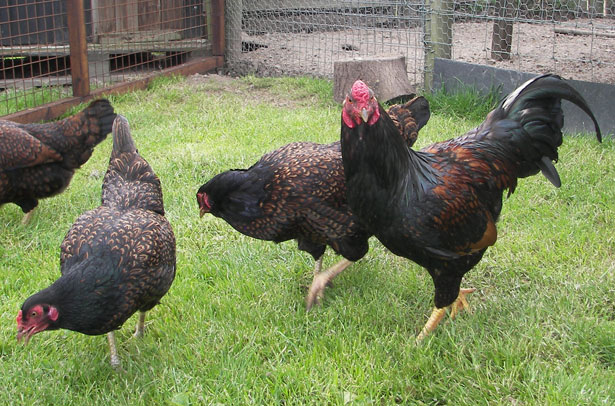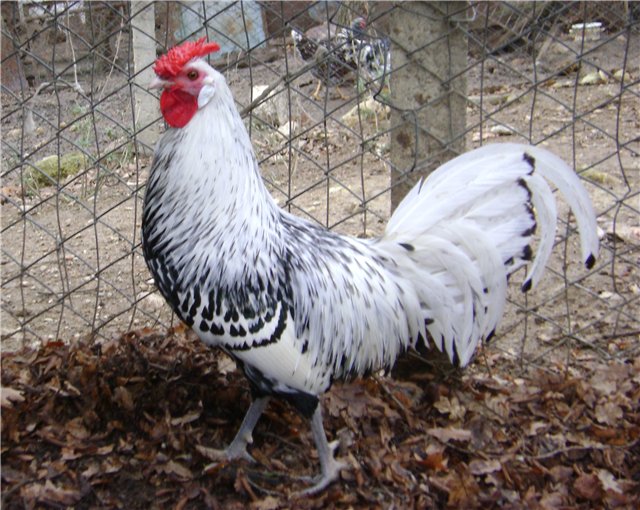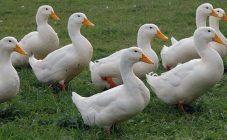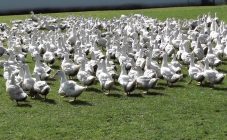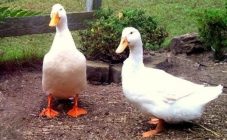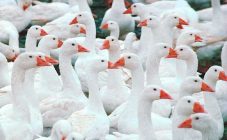Content:
Chickens have been the most popular breeding poultry for centuries. Care and maintenance does not take much time and effort, and in return you get fresh eggs and chicken. Interestingly, the ancestors of domestic chickens still live in the wild. These are bank hens and they live in the southeast of Asia. An interesting fact is that their relatives, the gokko tree chickens, nest only in trees. The weed hen does not incubate eggs, but independently builds an incubator from humus.
Today, thanks to the work of breeders around the world, a huge number of varieties of domestic chickens have been obtained. Over the entire history, about 1000 breeds have been bred. Purebred chickens differ not only in their characteristics, but also in appearance.
It is difficult for novice poultry breeders to decide on the choice of the breed, this article will help to cope with this issue and tell you what breeds of chickens there are in general.
The most popular chicken breeds for home breeding
First you need to understand for what purpose a homemade chicken is started. If for collecting as many eggs as possible, then you need to choose birds of egg breeds. If, for meat, you should choose among meat chickens. And if you want to get both, you need to take a closer look at the universal meat and egg breeds.
Popular representatives of egg breeds
White Leghorn
This breed is the most common among laying hens. Birds mature early and set records for early egg production. They begin to hatch as early as 4-5 months, while eggs reach a weight of 62 g. Egg productivity of an adult is high, up to 250 pieces per year. Chickens are small in size: 1.5-2.5 kg, but they also require less feed in comparison with large meat individuals. This breed also has a dwarf appearance.
Zagorskaya salmonI
The breed is named so because of the shade of its meat: it has a beautiful salmon shade. Chicken also has excellent taste. The weight of the rooster reaches 3.6 kg, and the hens - 2.7 kg. Laying hens are capable of laying up to 260 eggs weighing about 60 grams per year.
Isa Brown
The result of the work of French breeders. The peculiarity of such chickens is that they can adapt to various conditions of detention. Chickens are capable of laying about 320 eggs a year, weighing about 63 grams. The average weight of a layer is 1.9 kg.
Lohman Brown
Bred by German breeders. Layers begin to lay eggs as early as 135 days of life (at 5.5 months). Each year one female brings about 320 large eggs. The female weighs quite a bit: about 1.5 kg.
Russian white
As the name implies, these birds are the result of domestic selection. To obtain them, representatives of white Leghorns were crossed with local birds. The breed was the most popular in our country throughout the twentieth century. Chickens begin to hatch from five months (eggs weighing up to 58 grams). More than 200 eggs can be obtained from one layer annually.
High Line
Representatives of this breed have good immunity and high vitality. Layers are small: from 1.3 to 1.5 kg, while eggs are laid large, 60-65 grams each. Egg production from 240 to 340 pieces annually.
Hisex Brown
This is one of the best breeds of the egg trend, it is a hybrid of white leghorn. Excellent egg production rates: from 280 to 360 eggs per year, and the eggs are quite large (63-70 grams). Eggs have a small amount of cholesterol, which is appreciated by poultry farmers.
Promising types of meat and egg chickens
Adler silver
Representatives of domestic selection, bred in the Krasnodar Territory. These birds are distinguished by their unusual color and strong constitution. Interesting pockmarked color on the neck. Birds combine good egg production and great weight gain.
Kotlyarevskaya
A breed of Caucasian origin, excellent for both eggs and meat. The annual egg production rate reaches 240 pieces. Moreover, with proper care, this indicator does not decrease for several years. Chickens mature early and are not only good layers, but also hens.
Kuchinskaya jubilee
They combine the best qualities of meat and egg breeds. These chickens are outwardly beautiful, unpretentious in keeping and are distinguished by early maturity. The approximate number of eggs being laid is 180 eggs per year. The weight of males reaches 3.7 kg, females 2.7 kg.
Moscow
This species is unpretentious in terms of keeping and nutrition, it is highly viable. It is possible to get eggs from the sixth month of the laying hen's life. The average egg production is about 230 pieces per year (egg weight 60 grams).
New Hampshire
Bred by American breeders. Birds of this breed hardly get sick, they are distinguished by enviable endurance and adapt well to the conditions of detention. The number of eggs laid is about 200 per year. The average egg weight is 60 grams. Starting from the second year of life, the productivity of the laying hen gradually decreases: up to 140 pieces.
Orpington
Chickens were bred in the 19th century in England, named after the city in Kent, where they came from. Chickens are massive and powerful. Eggs yield from 160 to 180 per year, weighing an average of 61 grams. The rooster grows up to 5 kg, the chicken lags by a kilogram. Chickens of this breed grow rather slowly when compared to other broilers.
Rhode Island
This breed is considered the progenitor of many hybrid chicken species. These birds tolerate cold well and do not require special care, can eat pasture and rarely get sick.
The best representatives of meat breeds
Brama
The breed was bred by American breeders over a century ago. This name was given in honor of the Indian Brahmaputra river. These are real giants: females weigh 3.5-4 kg, and males 4.5-5 kg. The character is calm, phlegmatic. Birds have good meat production. Chickens are capable of laying up to 120 eggs per year, weighing about 60 grams.
Bress Galskaya
Among the feathered French, Bress is the Gallic champion in the number and size of testicles - about 85 grams. Their egg production is up to 250 pieces per year. The meat of these chickens has an incredible taste, they even received an AOC award.
Hungarian giant
The breed has become widespread due to the good taste of meat and good egg production, therefore it is often referred to as meat and egg. These chickens are great for backyard breeding. They have a characteristic reddish brown color. Among the positive qualities, one can note the rapid growth and adaptability to various climatic conditions.From the age of 4-4.5 months, the chicken begins to lay, and quite often: about 200 pieces are obtained per year. Egg mass 55-60 grams.
Cornish
This breed was previously referred to as fighting (now cockfighting is prohibited). Thanks to this species, modern broiler hybrids have appeared. Birds grow rapidly, by the time they reach adulthood they already weigh 3.5-4 kg. They do not cause problems in the content, although sometimes they show fighting qualities. Another plus - chickens have an instinct for hatching.
Cochinhin
The breed is highly productive in the meat direction. Outwardly, they resemble Brahma chickens, since they have common roots. These birds have an interesting gray feather color. Unpretentious in keeping, chickens are able not to reduce egg production in winter cold weather. The incubation instinct is well developed. Egg production does not exceed 110 pieces per year. Male weight up to 4.3 kg, chicken 4 kg.
Decorative chicken breeds
Such a bird is acquired rather for aesthetic pleasure. Decorative chickens are radically different from each other in appearance.
It should be borne in mind that chickens of decorative breeds cost a lot, this is quite an expensive entertainment, and keeping them at home is quite troublesome. First you need to take care of the proper nutrition of these unusual birds. Weather conditions are another key factor: many decorative species are not adapted to cold weather. It is also important to properly organize the chicken coop: it must be spacious. Further recommendations depend on the specific breed choice.
The following is a description of the most interesting and unusual chickens:
Hamburg
Despite the fact that this breed is decorative, it is quite suitable for home breeding. Among poultry breeders, these chickens are quite popular, as they are unpretentious to food and rush well. The birds have a flexible, curved silhouette, bushy tail with long feathers. The scallop of a rooster looks unusual and looks like a rose. Most often, these birds have a motley color. The weight of the Hamburg chicken is 2.5 kg, the rooster is about 3 kg. About 200 eggs can be obtained from a laying hen per year, weighing about 60 grams.
Chinese silk
An ancient breed, known since the 16th century. Birds are miniature: females weigh up to 1.1 kg, males up to 1.5 kg. They have a rounded body and a soft feather covering, pleasant to the touch. The character is calm and friendly, they make good contact. The hatching instinct is well developed. They give small testicles, 35 grams each, up to 100 pieces per year. Diet meat, very much appreciated in the homeland of the breed.
Phoenix (Yokohama)
The result of the work of Japanese breeders. Representatives of this breed can rightfully be called aristocrats of the chicken family. The ancestors of this breed were popular in the Far East at the court of the nobles and the emperor himself. The Phoenix chicken is not particularly beautiful, but the rooster can be compared to a peacock. The male of the Yokohama breed has a very long tail, 2.5-3 meters long. Such a tail creates some inconvenience in the content. Birds of this breed are quite miniature: a rooster weighs 1.5-2 kg, and a chicken about 1.3 kg. A chicken produces 80 to 100 eggs a year, weighing about 50 grams.
Fighting breeds of roosters
Such a phenomenon as cockfighting has its roots in ancient times. This bloodthirsty game appeared in the east of India, then came to Persia and spread throughout Europe. Cock-fighting was considered an aristocratic privilege and royal fun.
The sport became very popular in Britain, with everyone from the poor to the rich betting on results. However, this sport was banned in XIX. In our country, such battles were also banned, but already in the twentieth century. However, there are still underground arenas, so there is nothing surprising in the large variety on the market of fighting breed roosters... These include:
- Azil,
- Spanish fighting,
- Kulangi,
- Lutticher,
- Malay fighting,
- Moscow fighting,
- Old English fighting
- Suzdanesian fighting,
- Uzbek fighters,
- Shamo, and others.
Breeding chickens for beginners
Many people who have their own vegetable garden sooner or later think about getting animal products. The easiest option is to breed chickens.
First you need to decide whether the birds will be kept all year round or only in the summer season. For temporary breeding, a walking area and light shelter will be enough. The chicken coop for winter breeding should be well insulated.
Floor keeping of chickens is possible at the rate of 5 chickens per 1 square meter. This is the optimal area. The temperature in the chicken coop should not drop below 5-7 degrees and in no case should temperatures be allowed below zero. The room must be made not only warm, but also light and dry. The floor should be covered with a thick layer of sawdust or straw. The main thing is that there are no drafts there. Egg production of hens depends on good living conditions.
The birds' diet should be balanced, a source of water and food is always available. It is convenient to use feeders with three compartments:
- dry food
- mineral supplements
- mash
Beginners are advised to start egg breeds, for example: Leghorn, Russian White, Red White-tailed. They are the most unpretentious in keeping and breeding.
When breeding chickens, it is important to understand that some females do not have the instinct to incubate eggs. In this case, an incubator or another hen that has not lost its maternal instinct can help.
Breeding chickens is an easy task, given all the subtleties. Choosing the right breed for breeding purposes is an important task. This article has described the most popular chicken breeds with brief characteristics.
